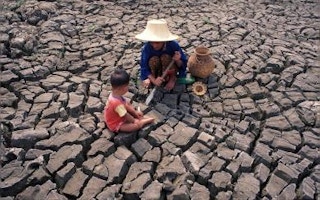Poor rural farmers may soon have new insurance options to help them cope with the weather-related agricultural losses that are predicted to increase with climate change.
Two United Nations (UN) agencies, the International Fund for Agricultural Development (IFAD) and the World Food Programme (WFP), launched a report last week which contained new guidelines for an alternative type of agricultural insurance, called Weather Indexed Insurance (WII).
This will help to reduce weather-related risks for some of the world’s poorest rural communities.
IFAD vice president Kevin Cleaver noted in a statement that rural poor people in developing countries are “vulnerable to a range of risks and constraints that impede their socio-economic development”.
“Weather risk, in particular, is pervasive in agriculture,” he added.
Rather than relying on claim assessments of the crop losses of individual small-holders – a time consuming and relatively expensive procedure – weather indexed insurance agencies use carefully monitored local weather conditions to estimate agricultural losses.
Weather indexed insurance holders would receive incremental payments when local weather stations record insufficient or excessive rainfall, depending on the pre-determined limits in the insurance contract.
The benefit of such of a scheme, noted the report, is that it can be used in areas with large numbers of small-scale farmers who lack the means to purchase traditional insurance.
The system has its limits, however. The guide’s authors note that because WII does not pay out claims based on actual crop losses, it can lead to insurers under- or over-compensating farmers. The system’s accuracy depends on a strong correlation between monitored weather conditions and crop yields.
For this reason, the report’s authors recommended using WII for areas with single crops spread over wide areas that experience the same weather patterns, such as the maize growing regions in Southern and Eastern Africa. They further recommended regions marked by regular rainy seasons where farmers depend on rainfall to water crops rather than on irrigation.
The insurance scheme is not recommended for situations that have varying effects on crop yields across a region, such as crop disease, pest outbreaks or floods, which generally have very localised impacts. Those hazards are better suited to other forms of agriculture insurance, noted the authors.
While the report names a number of locations that have been successfully piloting weather indexed insurance schemes, including China and India, they listed Southeast Asia as a problematic region: “Much of Southeast Asia suffers losses as a result of a combination of pests, disease and excess rain and flooding.”
Floods are difficult to index because, while excess rainfall can be measured across a broad area, there is no direct correlation between amount of rainfall at a specific location and amount of flooding, according to the report.
Yet, weather indexed insurance programmes are in use in Southeast Asia. Japanese property insurance firm Sompo Japan currently offers such insurance in Thailand, for example, where floods have reportedly destroyed an estimated one fifth of its annual rice production.
In its 2011 Corporate Social Responsibility (CSR) report, Sompo Japan’s joint venture, NKSJ Holdings, said that Sompo was offering WII to rice farmers in Thailand as part of its climate change adaptation initiative. In the first four months of 2011, the firm received over 6,000 applications from five provinces for the programme, which compensates farmers for crop losses due to droughts.
Last year, the Thai government declared natural disaster zones in 53 provinces, saying the country was facing its worst drought in twenty years.
According to the report, the people the indexed insurance is designed to help –small-scale farmers in developing countries – are the least likely to purchase agricultural insurance products.
The report recommends reaching these farmers through intermediaries - such as farming associations, buyers, agricultural companies that supply the farmers, non-government organisations or local banks – and presenting the insurance as part of a larger package that provides additional benefits to the farmers. Examples of additional benefits include better access to loans, more comprehensive insurance coverage or access to improved seeds.
Weather indexed insurance would also be useful for government agencies and relief agencies who need to provide quick access to relief in the wake of disasters, noted the report.
IFAD and the WFP supported the development of the guidelines as part of a joint effort, launched in 2008 and funded by the Bill and Melinda Gates Foundation, to reduce the weather-related risks of rural farmers and improve their access to financial services.
Earlier this year, IFAD issued a joint statement with the United Nations Environment Programme (UNEP) recognising the importance of better policies and investments to aid small-holder farmers and protect natural resources at the same time.
Small-holder farmers grow 60 per cent of the world’s food supply, and the rural areas where most of them live hold a large percentage of the world’s undernourished people. According to IFAD, one billion of the world’s most impoverished people live in rural areas.
“While not a panacea for poverty, nor the sole solution for at-risk producers, WII shows great promise as a tool to reduce the severe effects of weather related shocks on people who depend on agricultural production for their livelihoods” said IFAD’s Mr Cleaver.










